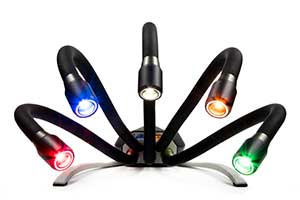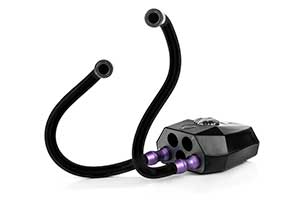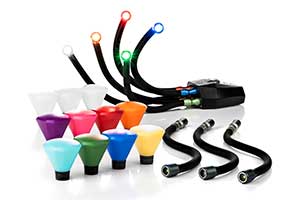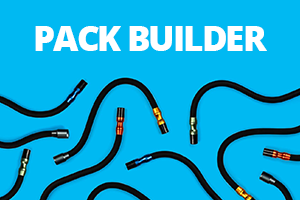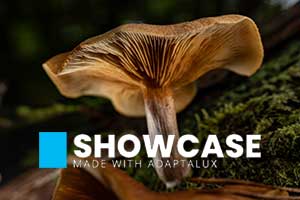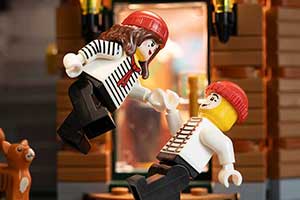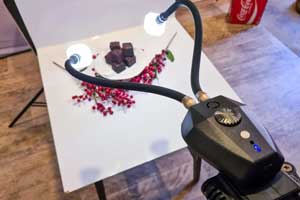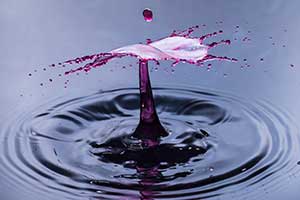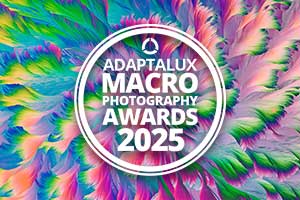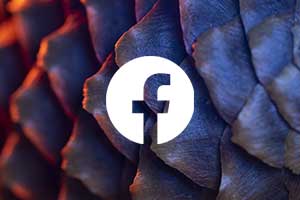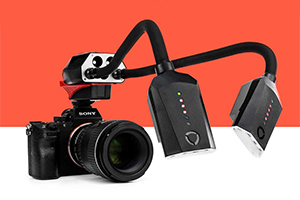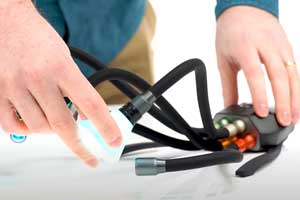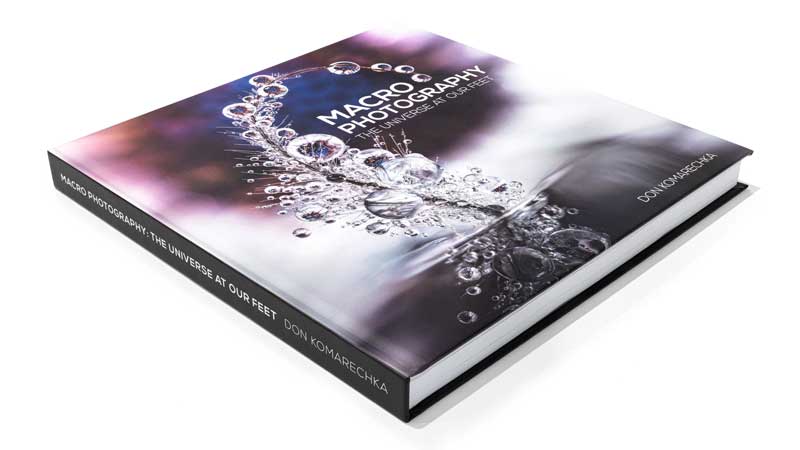We are very proud to have the Adaptalux Studio in the hands of many experts around the world. Don Komarechka is one of the worlds most talented and popular macro photographers and we are very excited to be included in his new macro photography book. In this article, Don shares his experiences using our UV lighting arms to create his amazing images.
If you want to see more of Don’s work, make sure to check out his book on Kickstarter – Macro Photography: The Universe at Our Feet
About the Photographer
Don Komarechka is an award-winning nature, macro and landscape photographer located in Barrie, Ontario, Canada. From auroras to pollen, insects to infrared, much of Don’s photographic adventures reveal a deeper understanding of how the universe works. Exploring the world that we cannot see with our own eyes has been a common thread in Don’s career as a professional photographer.
“Photography is about sharing your unique view of the world with others – without using words. Helping others accomplish the same goal is extremely rewarding. I like to see the world through my camera in ways I normally cannot see with my own eyes. Seeing the world beyond vision is a gift that photography gives me.”
Don Komarechka –
One of the hidden treasures of macro photography has been in front of us the entire time. By using ultraviolet light exclusively to illuminate flowers, insects and many minerals, they will glow with an otherworldly feel, completely transforming themselves from the way we normally perceive them. The Adaptalux UV lighting arms are a great option to start exploring this fascinating photographic genre, but there’s more to it than just lighting!
Discovering the right subject matter take a significant amount of trial and error. Some flowers don’t fluoresce under ultraviolet light at all, while others transform into beacons of light. You’ll have better just with some categories than others: anything in the buttercup family will do nicely, but cacti and succulent flowers almost universally perform well.
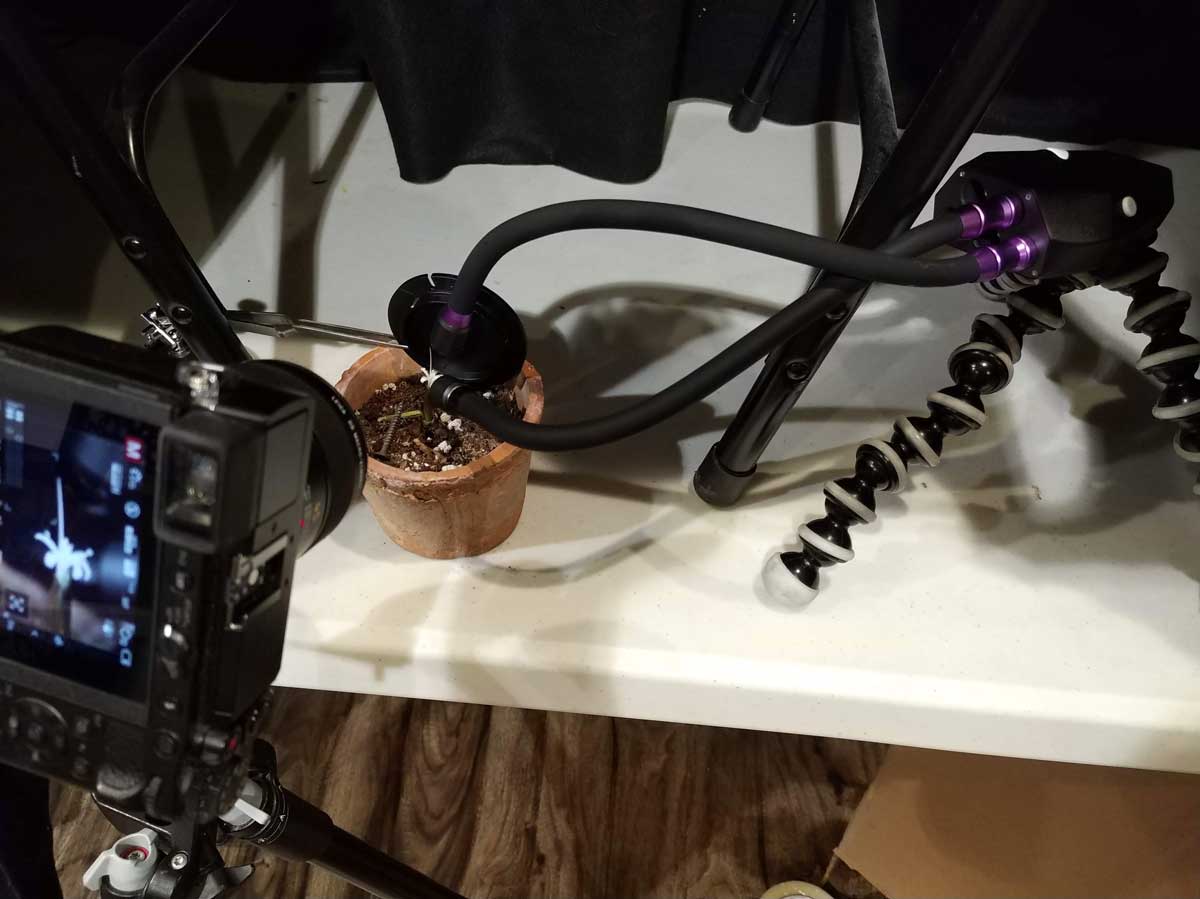
In this “behind the scenes” image, you can spot a very small white flower from a South African succulent I was growing with the hope that it would fluoresce, and I was not disappointed. For maximum effect, you’ll need to be shooting in complete darkness. I create a makeshift dark tent with a bulk piece of felt and two folding chairs that I place on a table in my studio. Even still, the light are off and the windows are blocked. You don’t want the camera collecting ANY visible light that wasn’t ultraviolet light first.
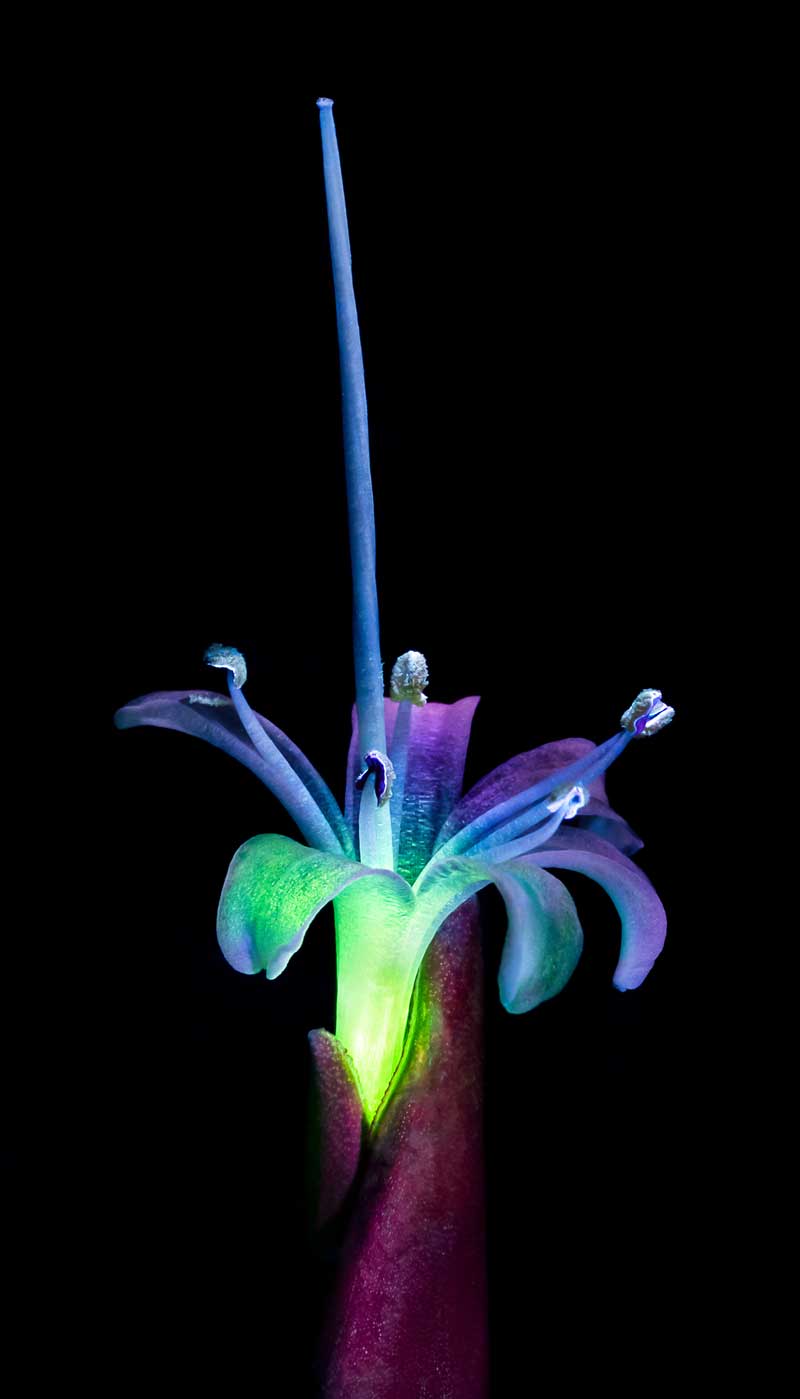
If this tiny flower didn’t fluoresce, the image would be completely black. The camera cannot see ultraviolet light, so the light emitted from the UV lighting arms would be completely invisible. The light can only be seen because of what happens when it strikes the subject: ultraviolet induced visible fluorescence. Just like glowing clothing under a black light, but far more impressive with natural subjects.
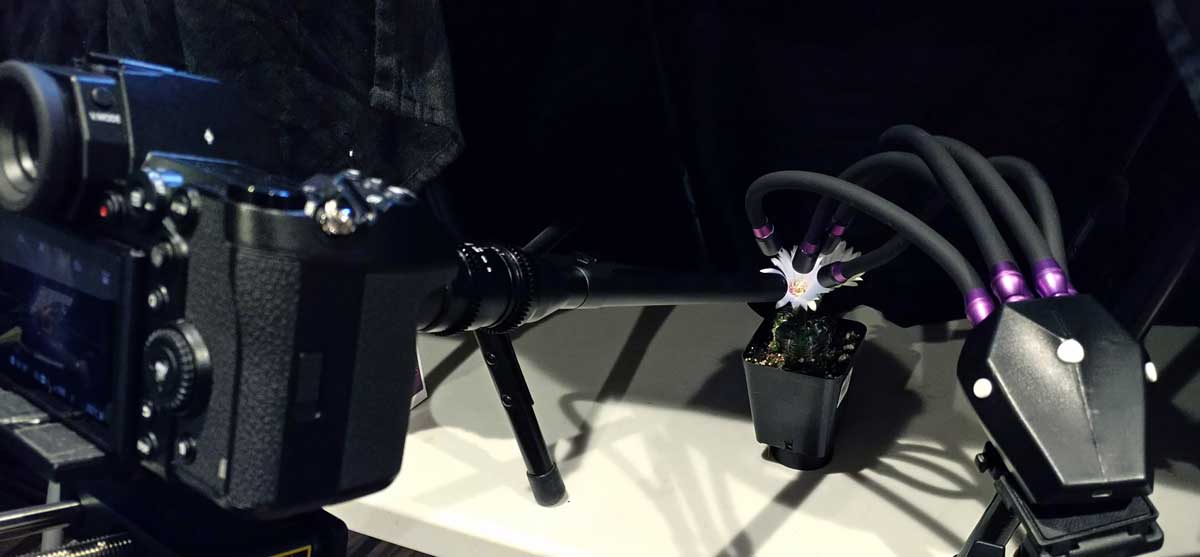
The more UV lighting arms you have, the more even your light will be and the brighter your subject will glow. The first succulent was lit with only two arms, but five are required to make this cactus flower glow. A higher ISO or longer shutter speed could help you out with fewer arms, especially with a Control Pod 2.0 with the “boost” feature enabled. When I’ve got the composition and focus all set, I activate this more intense mode just before pressing the shutter. Tip: Set the camera on a 2-second delay to prevent camera shake from blurring the image.
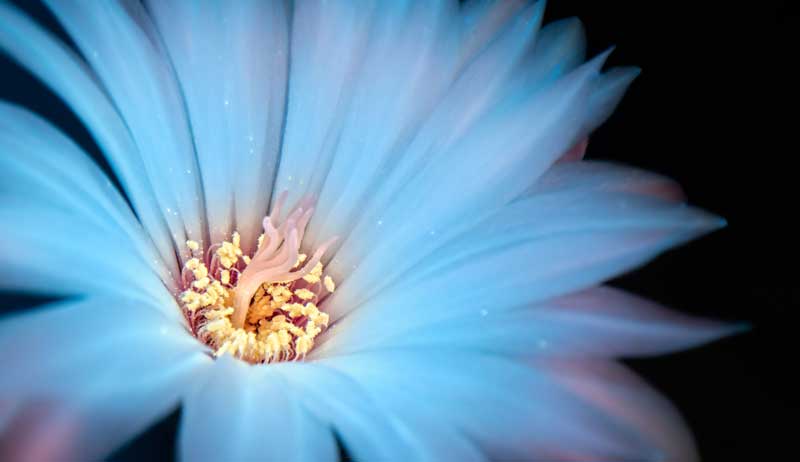
Distance from the subject is also very important. Without getting too deep into things such as the Inverse Square Law, moving the business end of the lighting arm as close as possible to the subject is ideal. Sometimes the arms are even if the frame, but not interacting with the subject. Closer the better! In this setup below with a Hellebore flower (Christmas Rose, part of the buttercup family), the flower is filling the entire frame so the arms are positioned just beyond the view of the camera:
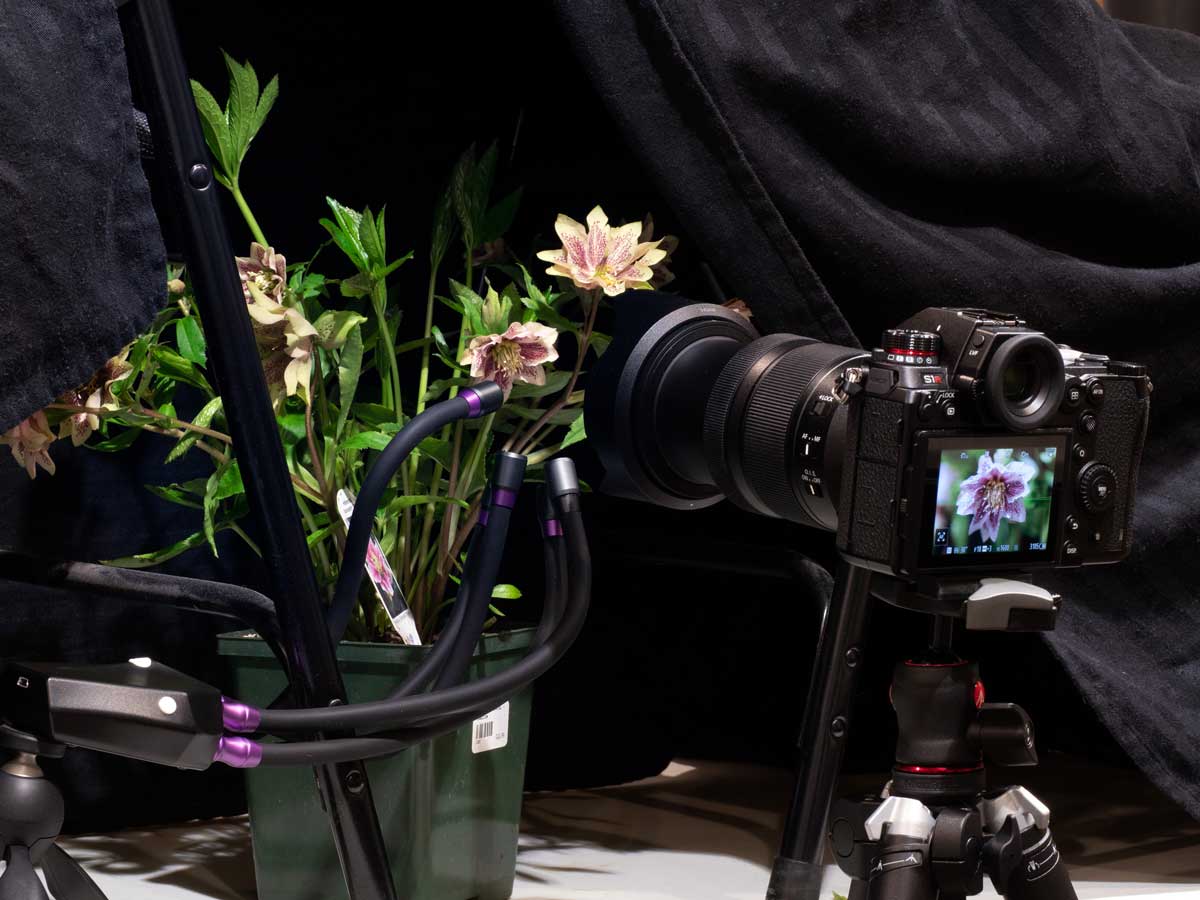
You’ll be always craving more light for this type of photography, but beware inexpensive UV light sources. Flashlight that claim to be ultraviolet often bleed so much into the visible spectrum that they appear bluish, completely contaminating your results. I’ve tested the Adaptalux lighting arms next to forensic UV lamps and custom-built UV flashes, and the quality of the light they emit is fantastic.
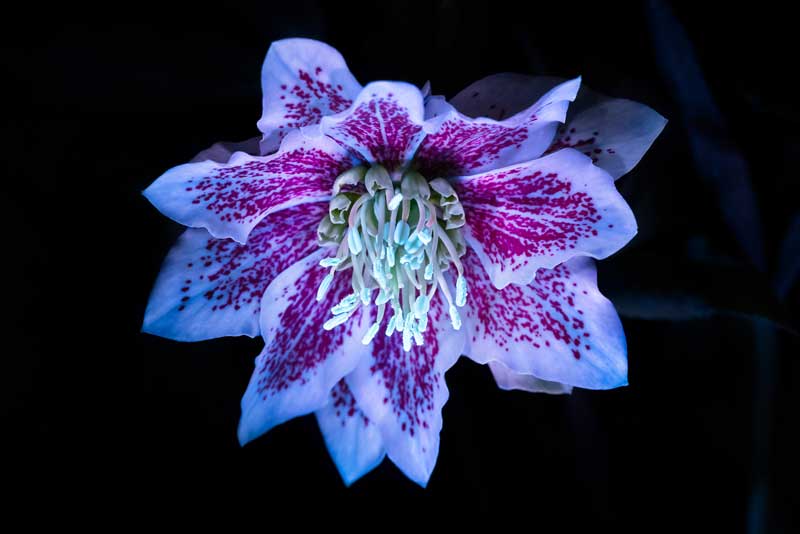
If there was visible light contamination in this image, you would lose all of the subtle shifts in hue around the center parts of the flower, and the pollen-covered stamens wouldn’t appear as bright as we see them because non-fluoresce visible light would be spilling in.
Good quality lights, up as close as possible in complete darkness will transform ordinary flowers into something that we would only think possible in science fiction. There is a whole universe at our feet just waiting to be explored!
Don Komarechka will cover ultraviolet photography at length in his upcoming book Macro Photography: The Universe at Our Feet which is currently being funded on Kickstarter: https://www.kickstarter.com/projects/donkom/macro-photography/ .
If you’d like the most comprehensive macro photography tutorials and techniques from overcoming beginners challenges all the way through to master classes in the most obscure niches, consider backing this project and receive your copy before Christmas 2019!
- Beer Glass Macro Photography Tutorial – Turn your drinks into abstract art! - 18th April 2025
- Abstract Oil & Water Photography: A Step-by-Step Guide - 7th April 2025
- Mastering Simple Flower Photography at Home: A Step-by-Step Guide - 24th March 2025

